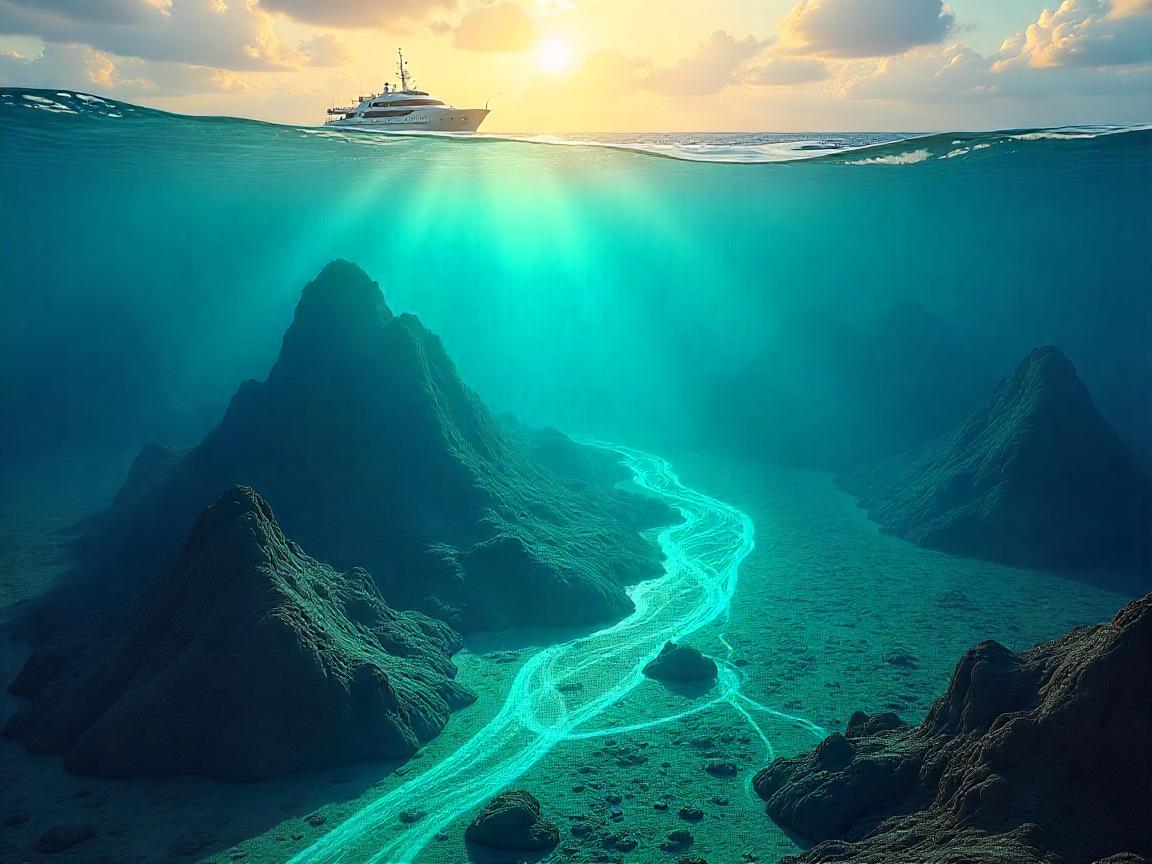
Suppose a range of mountains nearly as lofty as the Alps, to be found away at the bottom of the ocean, where no sign of it ever showed itself in print, till lately. Earlier this year alone, mapping the world ocean disclosed over 19,000 previously uncharted under-sea mountains, or seamounts, thus radically transforming our knowledge of ocean movements, how it supports life itself, and norms of the weather you experience on land. This is not a cartographic oddity. These giant elements are becoming covert designers of planet climate and oceans biological diversity. Suppose you suppose that the world is already totally explored, you are wrong,–it is still in the blue abyss that our strongest natural forces are being developed.
The Hidden Giants Beneath the Surface
NOAA, Schmidt Ocean Institute and the GEBCO scientists combined efforts to install resolvers of multibeam sonar on vessels such as Falkor (too) and Okeanos Explorer. It is possible because this technology senses even the most minute contours thousands of meters beneath. Recent survey off Emperor Seamount Chain amazed scientists who discovered the formations that seemed to rise above 1,500 meters above the seabed and restructured the current patterns that had not been disturbed over the millennia. Dr. Vicki Ferrini, who is a marine geologist at Columbia University holds the belief that, less than 25 percent of the ocean floor has ever been mapped in detail. Each new feature alters our concept of circulation, nutrient mixing and carbon sequestration.”
There is no exaggeration in the fact that these newly discovered ridges could shortly affect the way climate models dive down ocean heat transportation a factor that plays an important role in the determination of rise in sea ration and the force of storms.
Streams of Motion: The Seamounts that are Directing the Ocean
Seamounts are speed bumps and funnels that scatter and accelerate deep-water movements that play an important role in the distribution of heat throughout the world. A good case in point is the Southern Ocean, the seamounts which have recently been discovered are changing the Antarctic Circumpolar Current, the strongest oceanic conveyor belt on the planet. This amount of current uses almost 140 million cubic meters of water in a single second, a very overwhelming power, which influences temperatures in Australia and South America.
As water hits a seamount, it gets pushed up and in many cases nutrients are drawn up to the surface giving rise to a process known as upwelling. Such is the potency of this process that it has the capacity to sustain large plankton blooms and even define fisheries at an extremely distant location of thousands of miles long. I interviewed one veteran deep-sea expedition leader, Captain Laura Madsen, who recalled reading sonar screens that showed mountains hundreds of feet tall that she termed to me as ghost mountains. I still remember what she said, when she said, It is humbling to consider that we know much more about a planet two hundred million miles away than the floor of our very own ocean.
The Major Impact of Undersea Mountains On the Currents:
- Deflection of deep flows, formation of localized eddies and turbulence
- Pumping essential nutrients such as upwellings to sea life Driving nutrient-rich upwellings essential to marine life
- The alteration of heat exchange, which may affect weather extremes
New Hotspots of Life and Vulnerability
More than their influence on currents, seamounts are amazing life oases. Last year a Schmidt Ocean Institute dive off the Azores discovered a new species of coral surviving at a depth of 1,200 meters, in locations that never see sunlight. These are special ecosystems, which can be full of sponges, crustaceans and fish that can be seen nowhere. However, the sadness is that less than 1 percent of the world-wide seamounts receive any formal protection and as such they are prone to the damage of destructive trawlers and mining even before the scientists are able to document their riches.
Recent Finds Not to be overlooked:
- Deep-sea sponge garden in the North Pacific Deep sea: a newly discovered garden of sponges that harbor dozens of rare invertebrates
- The sides of seamount in Hawaii promote huge colonies of commercially significant fish
- An existing potential of cobalt and rare earth metals that is faster to attract mining companies than to attract conservationists
A New Frontier—And a Call for Action
When these invisible mountains rise to the surface, it is obvious that our simplistic ocean models and piecemeal policies do not stand up to this complexity. There is a dire need of improved security and funding of exploration. Dr. Climate oceanographer Karen Heywood put it to a panel this spring: The more seamounts you have the more you learn how the ocean operating system is running. Neglect them and we run the risk of misunderstanding everything, including fisheries, to climate tipping point.”
I think that such discoveries can only make people feel both the marvel and a responsibility. What more is under our feet, unseen all the time still making our world? As we go about remapping the ocean floor, we temporarily stand a chance at respecting and protecting these overlooked giants – before we go about eliminating them before we know enough about their capabilities.